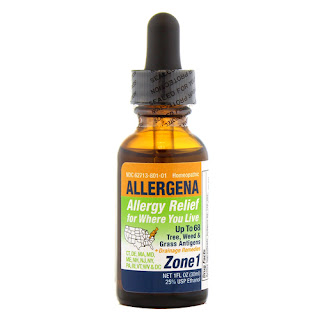Since 2004, the cost of an EpiPen has risen almost 450
percent. What does that mean for the
millions of people with severe allergies?
It means a lot of people are forgoing this life-saving injector.
Currently, a two pack is around $600.00. You can no longer buy it in singles. The shelf life is one to one and half
years.
And these staggering costs aren't just affecting families. Several
states require fire departments, First Responders and schools to carry EpiPens,
which are putting a huge hole in their already taxed budgets.
Some are blaming the lack of competition, pointing out that
the EpiPen is like Coke. Recently, a
competitor withdrew from the market, and earlier this year the Food and Drug
Administration refused to approve a generic EpiPen.
Last year, 4 million prescriptions were written for epinephrine
injectors, three-quarters of those were for the EpiPen brand.
The rising cost of the EpiPen could have staggering repercussions
apart from people dying from an allergic reaction.
It was reported that one mother, whose son was severely allergic to milk, declined to fill a prescription for $1200 and instead opted to buy a
supply of syringes and epinephrine from the drug store for $20.
This may be an option for someone with extensive medical training
but not for someone with no medical background.
There are too many safety issues from contamination to accidental
intravenous injection to the incorrect dosage that could backfire with devastating results.
And if you’ve ever needed your EpiPen, you know this isn’t
something to fool around with. Some
doctors recommend going to the hospital even after you given yourself an
injection.
Mylan Specialty L.P reports the price of EpiPens has
increased because of “multiple, important product features and the value the
product provides”. Yet, the costs only
seems to have risen in the US.
The cost for EpiPens in Canada can be five time less
expensive.
But unfortunately, there is not a lot of options for an anaphylactic
reaction. Taking Benadryl might help with
the itching and slow down the reaction but it is not going to save your
life.
One study revealed there are more EpiPens sold in the
Northern States than in the Southern States.
The thought behind this is that Vitamin D deficiency may be a
contributing factor since it is well established that northerners are deficient
in vitamin D. So another consideration
might be to take vitamin D supplements.
Meditrend.com Inc. was founded in Albuquerque, New Mexico by
Richard D. Savage in 1980. Mr. Savage has been an entrepreneurial pioneer
in the discovery, development and distribution of innovative health solutions.
"Our aim is to commercialize new, creative products and services that
improve the quality of health. Our goal is to make health solutions available
that are medically sound and economically viable."






